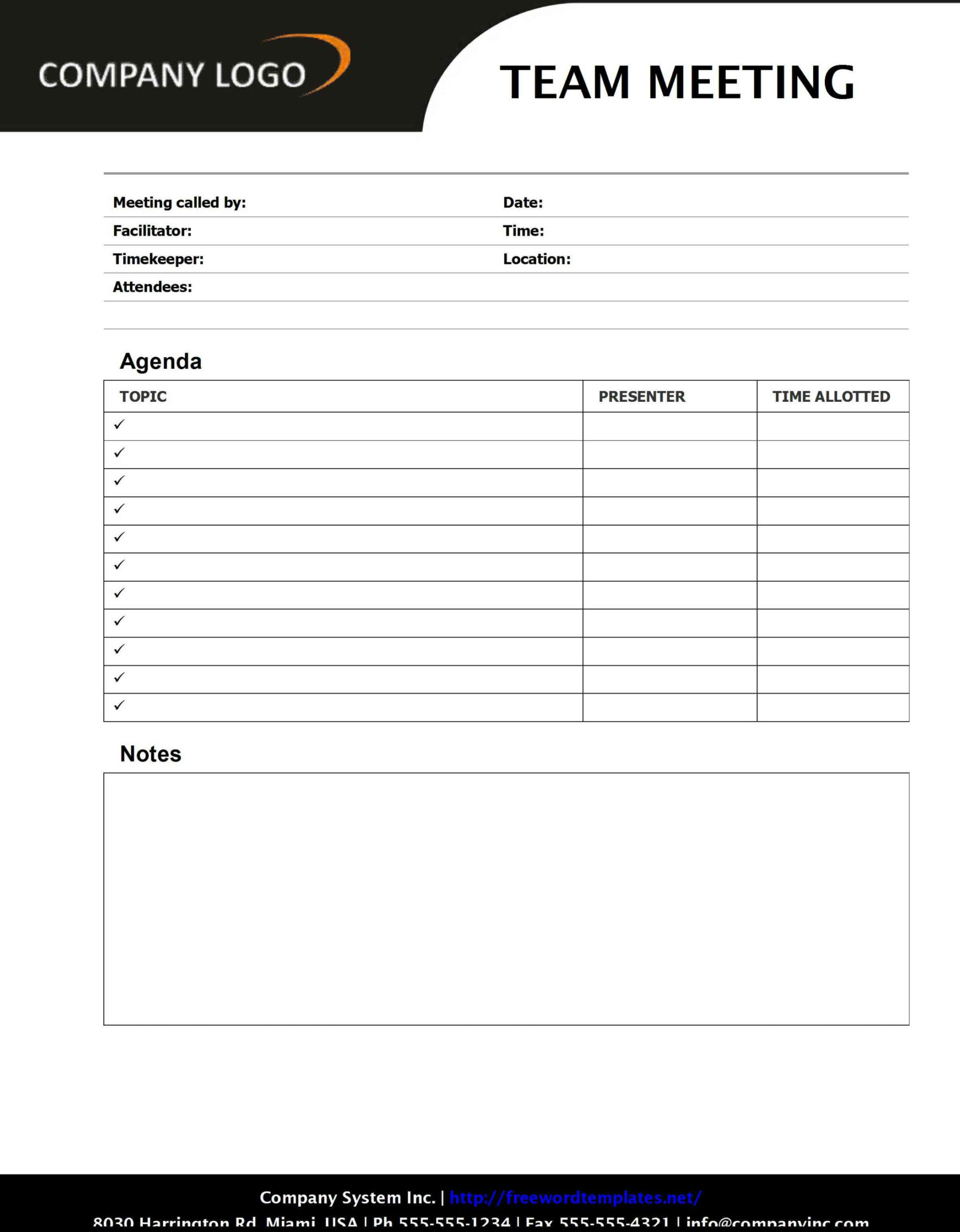An Agenda template serves as a roadmap for meetings, outlining the topics to be discussed and the time allotted for each. A well-crafted agenda template can enhance meeting productivity, ensure that all important issues are addressed, and foster a more focused and efficient discussion. In this guide, we will explore the essential elements of a professional agenda template and provide practical tips for creating one in Microsoft Word 2010.
Essential Elements of an Agenda Template

1. Meeting Title and Date: Clearly state the purpose of the meeting and the date it will be held. This information should be prominently displayed at the top of the template.
2. Meeting Time and Location: Specify the exact time and place of the meeting to avoid any confusion among attendees.
3. Attendees: List the names or titles of individuals who are expected to attend the meeting. This can help ensure that all relevant stakeholders are informed and involved.
4. Meeting Objectives: Briefly outline the goals or outcomes that the meeting aims to achieve. This will help participants understand the purpose of the discussion and stay focused on relevant topics.
5. Agenda Items: This is the core section of the template, where you will list the topics to be discussed during the meeting. Each item should be concise and informative. Consider using a numbered or bulleted format to improve readability.
6. Time Allotment: Assign a specific amount of time to each agenda item. This will help manage the meeting’s pace and ensure that all topics are covered adequately.
7. Action Items: Designate a section for recording action items that arise during the meeting. This will help track tasks and assign responsibilities for follow-up.
Design Considerations for a Professional Agenda Template
1. Layout and Formatting: Choose a clean and uncluttered layout that is easy to read and navigate. Use consistent fonts, font sizes, and spacing throughout the template. Consider using headings and subheadings to organize the content and improve visual clarity.
2. Branding and Consistency: If applicable, incorporate your organization’s branding elements into the template. This can include your company logo, colors, and fonts. Consistency with your branding guidelines will create a professional and cohesive look.
3. White Space: Use ample white space to improve readability and prevent the template from appearing cramped. This will also make the content easier to scan and digest.
4. Clarity and Conciseness: Write clear and concise language throughout the template. Avoid jargon or technical terms that may be unfamiliar to some attendees. Use bullet points or numbered lists to present information in a digestible format.
5. Professionalism and Trust: The overall design of the template should convey professionalism and trustworthiness. Avoid using overly flashy or distracting elements that could undermine the credibility of the meeting.
Additional Tips for Creating an Effective Agenda Template
1. Involve Stakeholders: Consult with key stakeholders to ensure that the agenda reflects their priorities and concerns. This will help create a more relevant and engaging meeting.
2. Distribute in Advance: Distribute the agenda to attendees well in advance of the meeting. This will give them time to prepare and ask any necessary questions.
3. Be Flexible: Be prepared to adjust the agenda as needed during the meeting. Unexpected issues or discussions may arise that require changes to the original plan.
4. Follow Up: After the meeting, distribute a summary of the discussion and action items to all attendees. This will help reinforce key points and ensure that follow-up tasks are completed.
By following these guidelines and incorporating the essential elements of a professional agenda template, you can create a valuable tool for conducting effective meetings and achieving your organizational goals.